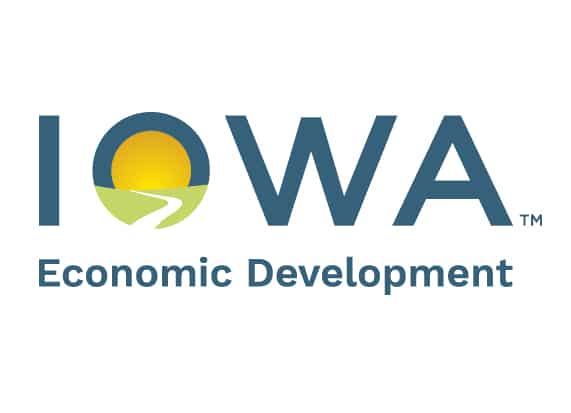Local economists weigh in on trade, construction

Gigi Wood May 2, 2025 | 10:21 am
5 min read time
1,188 wordsAll Latest News, Economic Development, Government Policy and LawThe Greater Des Moines Partnership hosted an economic outlook panel webinar this week, with three economists weighing in on various business challenges. They discussed how the agriculture industry is faring with tariff changes and what they see coming for trade and other industries, such as construction.
Webinar panelists included Chad Hart, an economics professor at Iowa State University, Jeffrey Kappen, a partner at Bâton Global and associate business professor at Drake University, and Anne Villamil, an economics professor at the University of Iowa. Panelists noted that their observations capture a moment in time, and with many new labor and economic reports coming out this week, those reflections could change. This is Part Two of our coverage; additional reports will be published in the coming days.
Economic indicators
When asked what indicators they’re watching, Villamil said she’s monitoring gross domestic product, employment and inflation.
“GDP was very good last year, employment is at historic lows, kicking up maybe a little bit, but really it’s still in good shape and inflation is coming down. So when we started the year, they were in good shape, but there’s a lot of concern going forward because of this unclear tariff policy,” she said.
The dollar weakening is a concern, and when she speaks with colleagues and experts about inflation, they expect it to increase.
“That’s concerning because the Fed has repeatedly said that they want inflation expectations well anchored at 2% that had been the case, and that’s changing, and I think that’s some of what is giving the Fed concern and pause about what to do,” Villamil said. “Oil is always a key input that actually has been trending down, so that’s helpful in terms of a reduction of a primary input. But one of the reasons that it’s trending down is concern about the economy going forward.”
Villamil said those new economic reports issued this week will be telling. The panelists shared concern that the numbers will be artificially high because of consumers over-buying to stockpile before new tariff rates hit.
Hart said stockpiling could be taking place in agriculture.
“One of the things we’re watching right now is that export sales, as we look especially across our bulk commodities, have been higher this year as opposed to the previous year. A lot of that may be due to forward purchasing by global consumers looking to do the same thing, get some product in before prices rise because of the tariffs and the trade disputes that we’re under right now,” he said. “And that does lead to a lot of uncertainty as we’re looking forward.”
When it comes to trade, federal officials have told the business community that it will take time to rebalance the supply chain as manufacturing shifts to domestic locations.
“I teach international business and spend a lot of time helping people navigate their global strategies and one of the things that we’re seeing shift rapidly is this realignment, or intended realignment, of global supply chains,” Kappen said. “One of the reasons we see some discomfort among corporate leaders is that readjustment is going to take time. I think [April 28], the treasury secretary indicated that rebalancing would take two to three years, and that is not a quick process. And so a lot of business leaders are trying to decide: What are they going to do this year?”
A concerning trend he’s noticed this week is the reduced number of shipments from China to the U.S.
“I was surprised this week to read that the number of blank ships, which is canceled sailings in April 2025, out of China toward both the west and east coasts of North America,” Kappen said. “We’re down more than in May 2020, that is, there are fewer ships coming than at the height of the pandemic. And as we look at container demand to the U.S., they’re estimating that it’s going to be down 28% this week to the West Coast and 42% to the East Coast.”
If it continues, it could take many months to reverse it.
“I think the reason we saw the big retailers like Walmart and Target at the White House is they’re concerned that if a third of their goods are coming from China and China’s not shipping them, we will eventually feel that,” he said. “During the pandemic, we talked about the 55-day window and how supply chain disruptions tend to unfold over a couple months, and it takes longer than that to re-establish that flow once the spigot is turned back on.”
Residential construction
Depending on the sector, construction is generally forecasted to have a positive year in 2025. The Associated Builders and Contractors this week published its analysis of the latest U.S. Bureau of Labor Statistics data on job openings, and showed that openings for the industry dropped by 38,000 last month and are down 90,000 from the same time last year.
Panelists discussed what they’re seeing in residential construction. It’s possible trade issues could affect materials pricing and availability. Undoubtedly, interest rates will play a role in industry growth.
“As we look at lumber, for example, we would expect those prices to increase, because we do import a fair amount of the lumber that we need for residential construction,” Hart said. “When we’re thinking about governmental construction, I think there are concerns as we look there, as well. We know that President [Donald] Trump, through looking at government efficiency, has been severely curtailing government spending here. Will that start to show up in certain construction activities around the country? Thus far, that’s one place where we haven’t seen a lot of changes. But I do think it does bear watching.”
Villamil added that interest rates have gone up slightly in recent weeks.
“With the [Federal Reserve interest rate changes] on pause, we’ve seen mortgage rates go up a bit in some weeks,” she said. “The 10-year government bonds are a benchmark for lots of things, and as there is uncertainty and potentially loss of confidence in the United States, that can drive up interest rates. We’ve seen it happen [over] a few weeks and that’s concerning. That will certainly constrain the construction industry.”
Construction project risk may become more of a focus this year, Kappen said.
“Beyond inputs, labor and interest rates, I think risk modeling for construction is also going to be impacted as underwriters look at what is the risk of a project failing or not being completed. And that will also impact the overall cost of construction projects,” he said.
Another question mark is what will happen to empty federal buildings, he added.
“If the dismissal of federal workers holds, and there are plenty of lawsuits swirling around federal employment at the moment, will the government also have a lot of real estate that it needs to release to the market? How many thousands, if not millions, of square feet are we talking about? And that would certainly impact the commercial sector if those buildings are vacant or repurposed. It might be that we see an acceleration in repurposing existing stock rather than building new because of relative cost and risk.”

Gigi Wood
Gigi Wood is a senior staff writer at Business Record. She covers economic development, government policy and law, agriculture, energy, and manufacturing.










